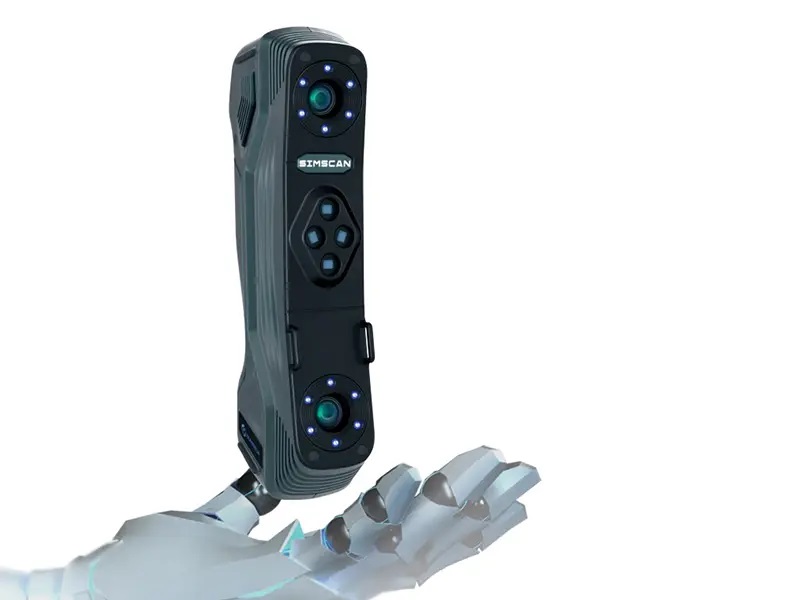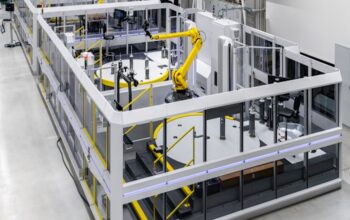A mould is made using a notional model before manufacturing ever begins. The theoretical model and the reality of industrial manufacture, however, differ significantly. Building an effective mould is essential for producing components that adhere to technical requirements.
Moulds are employed in the production of new energy cars to produce a variety of auto elements, including the interior, battery box covers, A-surfaces, and precise electronic components. Manufacturers must discover a faster, less expensive technique to check the mould in order to acquire a competitive edge.
New Energy Vehicle Part Manufacturer
The customer specialises in creating, manufacturing, and marketing composite material-based products. The business is excellent at creating parts for new energy vehicles, and it has given these parts to well-known producers.
In this project, the customer measures moulds that are used to make battery box covers, obtains their complete 3D data, and verifies that they adhere to the technical specifications using Scantech’s portable 3D scanner SIMSCAN.

Inspect Molds to Produce Reliable Automotive Parts
The battery pack, which makes up the majority of modern energy vehicles, needs a strong yet lightweight top cover to support and shield it from damage from the outside world.
Glass fibre reinforced plastic (FRP), a cutting-edge composite material with a high strength-to-weight ratio that can be used to make battery box covers for new energy vehicles, is used in this instance to create the moulds for the battery box covers.
The customer wanted to check the flatness of numerous automotive FRP moulds as well as the GD&T. They can then confirm that the battery box cover complies with delivery standards and that the moulds meet the specifications. This makes it easier to produce components that are trustworthy and effective.
Difficulties of 3D Scanning Intricate Molds
Deformation – Due to the poor stiffness of FRP, created moulds may distort. Furthermore, when compared to metal items, FRP products are more likely to deform.
Large Size – Due to the size and complexity of the moulds, measuring takes a lot of time and effort. The measurement technique is complicated by its huge size.
Confined Areas – The moulds’ various corners, vertical surfaces, and small areas make it impossible for them to be measured using standard techniques. Getting complete data is challenging.
Drawbacks of Traditional Measurement Methods
Level bubble testing was once a popular technique for inspecting the mould surface, but it had several disadvantages:
It could only determine whether a surface was flat or not, not the precise location and magnitude of flaws like dents. Due of this, it was difficult to precisely fix the mould, and occasionally it had to be completely scrapped, costing a lot of money.
The employees had to rely on their knowledge and discretion to remove the mould because it produced no test report or visible outcomes. This required the crew to be really professional.
The productivity of mould processing was decreased since it took a lot of time and resources to thoroughly inspect each item.
Scantech’s Handheld 3D Laser Scanner
The 3D scanner used: SIMSCAN
The mould surfaces were coupled with a few targets, and the operator swiftly captured high-density points by scanning the surfaces with a handheld SIMSCAN 3D laser scanner. 3D modelling software was used to process the scanned data and compare it to the CAD model. Last but not least, the operator acquired inspection records to quickly spot deviations.
The smallest mould (60cm*25cm) takes 8 minutes to scan, while the largest mould (200cm*100cm*50cm) takes 15 minutes.
Advantages of 3D Scanning Molds
Fast scanning for high efficiency
SIMSCAN scans quickly with a measuring rate of up to 2.8 million measurements/s with 17 blue laser crosses. It measures huge parts very effectively because it can scan a surface up to 700*600 mm in size.
Excellent performance for fine details
It can record 3D data of features with a high level of quality and an accuracy of 0.020 mm. Additionally, SIMSCAN includes two cameras that are only 130 mm apart, making it simple to obtain precise 3D data of confined locations.
Portable, compact, and flexible
Simscan is a portable, palm-sized 3D laser scanner that allows engineers to measure things for extended periods of time without becoming overly tired. Even under difficult circumstances, measurements can be carried out with ease.

Real-time report for intuitive analysis
To compare and analyse it with the original CAD model, the gathered data can be transferred into 3D inspection software. In order to provide precise data assistance for ensuing product repair and mould modification, it can produce simple-to-understand colour maps.
Click on the following link Metrologically Speaking to read more such blogs about the Metrology Industry.









